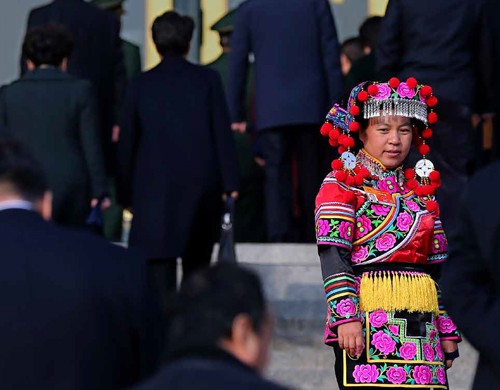
Minorities and indigenous peoples left behind as Asia’s cities flourish, says MRG annual report
Minorities and indigenous peoples have been among the last to benefit from the rapid growth of Asia’s cities, according to Minority Rights Group International’s (MRG) annual report.
This year’s State of the World’s Minorities and Indigenous Peoples 2015 focuses on cities and shows that a shift towards urban life has entrenched discrimination and fuelled insecurity for marginalized Asian communities.
Asia is home to many of the fastest urbanizing countries in the world, with a growing number of minorities and indigenous peoples migrating to cities. Many leave rural areas due to declining agricultural employment or displacement caused by armed conflict or development projects. But urban minorities and indigenous peoples often face isolation, inadequate housing and limited employment opportunities, says the new report.
‘Minorities and indigenous peoples make up a significant portion of Asia’s urban populations, yet the benefits of economic growth have not been equally shared,’ says Mark Lattimer, Executive Director at MRG. ‘In fact, the expansion of Asia’s cities has made some communities more vulnerable to exploitation and abuse, while exacerbating existing inequalities and communal tensions.’
Minorities and indigenous peoples in Southeast Asia have been the targets of evictions to make way for urban development projects, for example in Cambodia, or reduced to tourist attractions, such as in Thailand. Other urban minority populations have been openly discriminated against, including religious minorities in Ho Chi Minh City, Vietnam, or violently targeted, like the Rohingya in Sittwe, Burma.
In South Asia the rapid expansion of cities has led to the growth of slums and informal settlements, often on the periphery of cities. In this context, Dalits are particularly vulnerable to exploitative or unsanitary employment, such as manual scavenging, and represent one in five of urban slum dwellers in India. Urban Dalit women are subjected to additional layers of discrimination, including sexual violence and harassment.
In addition, many minority communities, such as Pakistan’s Christians and Shi’a, are increasingly being targeted for violent attacks in urban areas.
In East Asia, rapid urban growth is transforming China and leading to forcible resettlement, destruction of heritage and other impacts that have been felt especially acutely by Tibetan and Uyghur minorities. For example in Kashgar, the state-led destruction of the city’s historic Uyghur architecture is a major contributor to unrest in the Xinjiang region.
The pressures of integrating in urban areas can also pose a threat to the identities of minority and indigenous communities. For indigenous Australians some elements of traditional heritage have largely vanished. While 56 per cent of those in rural areas speak an indigenous language, this figure falls to just 1 per cent in urban areas.
Some 70 percent of the world’s indigenous peoples reside in Asia, posing unique challenges as well as opportunities for its diverse urban populations. In Oceania, for example, traditional indigenous solutions to environmental hazards are being applied to the defence of urban areas from climate change. Similarly, in Baguio City in the Philippines, indigenous women are earning a living through the application of traditional vermiculture to solid waste recycling.
‘Ensuring minority and indigenous peoples’ rights in urban areas benefits not only the communities themselves, but the entire urban population,’ added Lattimer. ‘Their inclusion is therefore an essential element for any city seeking to become more socially just and sustainable in the long term.’
Notes to editors
- Interview opportunities:
- Mark Lattimer, Executive Director, Minority Rights Group International
- Nicole Girard, Asia Programme Coordinator at MRG
- Hanna Hindstrom, Asia Information Officer at MRG
- Minority rights activists from Bangladesh, China, India, Indonesia, Pakistan and the Philippines
- State of the World’s Minorities and Indigenous Peoples 2015 is available for free download on MRG’s website on 2 July 2015
- Minority Rights Group International is the leading international human rights organization working to secure the rights of ethnic, religious and linguistic minorities and indigenous peoples. We work with more than 150 partners in over 50 countries.
To arrange interviews or request a copy of the report, please contact the MRG Press Office on [email protected] .